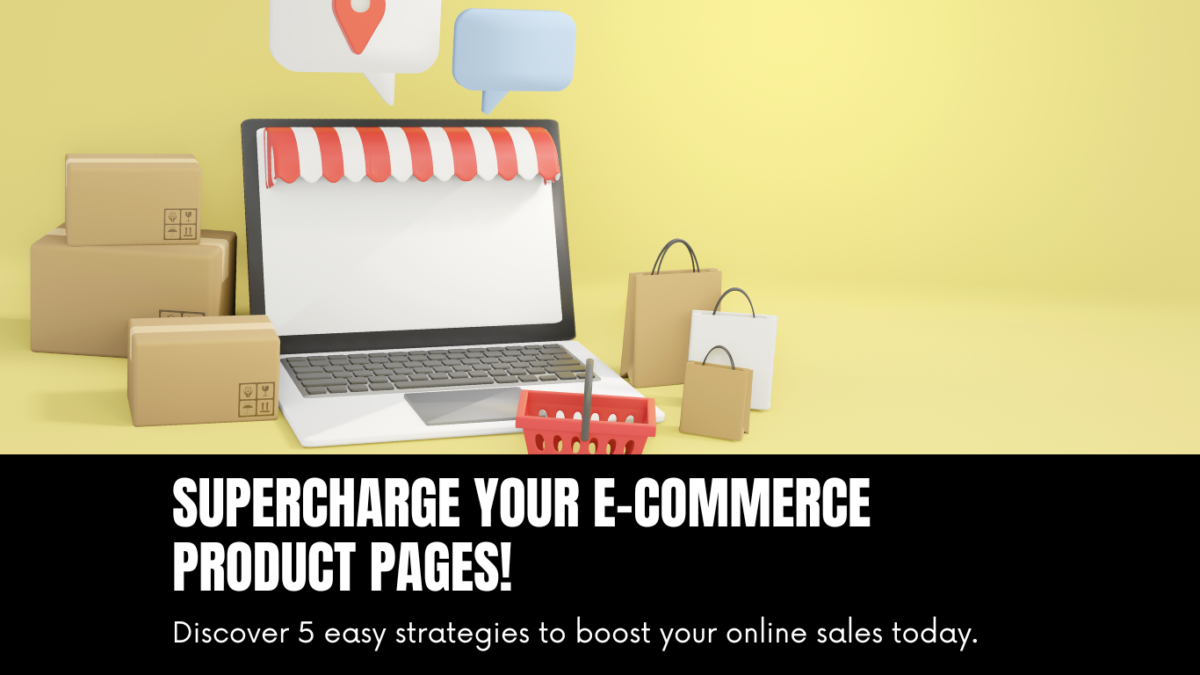In the ever-evolving world of e-commerce, where competition is fierce and attention spans are fleeting, your product pages are the digital showcases that can make or break your online success. As online shoppers navigate the vast landscape of options, your ability to captivate their interest and convert it into a sale hinges on the effectiveness of your product pages. In this article, we'll unveil five simple yet potent strategies that can transform your e-commerce product pages from mundane to magnetic. With the power of statistics, examples, and data-driven insights, we'll explore how you can enhance the visual appeal, persuasive content, and user experience of your product pages to boost your online sales. Let's dive into these strategies and discover how to supercharge your e-commerce product pages to engage, convert, and delight your customers.
1. High-Quality Product Images📷
Visual content is king in e-commerce, and product images are your best asset for grabbing the attention of potential customers. According to a study by Adobe, websites with high-quality images are 67% more likely to convert visitors into customers. In fact, 67% of consumers consider image quality more important than product information or reviews (MDG Advertising). Additionally, 22% of product returns are due to inaccurate product images (Shotfarm). Example: Imagine you're selling a luxurious leather handbag. Rather than using a single, low-resolution image, provide multiple high-resolution images from different angles, showing close-ups of the leather texture, stitching, and any unique features. Consider adding a 360-degree view option for an even more immersive experience.
2. Compelling Product Descriptions📄
A well-crafted product description can make all the difference. Be sure to highlight the benefits and unique selling points of your product. According to a Nielsen Norman Group study, users read only about 20% of the text on an average web page. However, 79% of shoppers who are dissatisfied with the product description are less likely to purchase from that site (Salsify). Furthermore, 54% of online shoppers rely on product descriptions to make an informed purchase decision (eMarketer). Example: For that leather handbag, describe not only its physical attributes but also the feeling of luxury it offers. Use descriptive words like "supple Italian leather" and "handcrafted with precision." Tell a story about how it complements various outfits or occasions.
3. Customer Reviews and Ratings⭐
Consumers trust their peers more than they trust advertising. Encourage customers to leave reviews and rate your products. A study by PowerReviews found that products with reviews have a 135% higher chance of being purchased. Notably, 92% of consumers read online reviews before making a purchase (Spiegel Research Center), and products with a rating of 4.2 to 4.5 stars see the highest conversion rates (Reevoo). Example: If a customer raves about how the leather handbag exceeded their expectations in terms of quality and style, feature this review prominently on the product page. Make it easy for customers to leave reviews and rate products by implementing user-friendly review widgets.
4. Clear and Concise Pricing Information💰
Transparency in pricing is crucial. According to a study by MarketingLand, 56% of online shoppers abandon their carts due to unexpected costs. Ensure that all pricing information, including taxes and shipping fees, is clearly displayed. Keep in mind that 28% of shoppers abandon carts because of unexpected shipping costs (Baymard Institute), and 61% of shoppers consider shipping costs when making a purchase decision (Statista). Example: Display the total cost upfront, and consider offering free shipping or a clear breakdown of shipping costs. If you offer promotions or discounts, highlight them prominently to entice potential buyers.
5. Mobile Optimization📱
With the increasing use of smartphones for online shopping, your product pages must be mobile-friendly. Google reports that 79% of smartphone users have made a purchase online using their mobile devices in the last six months. Mobile commerce now accounts for 40% of online transactions (Statista), and a 1-second delay in mobile page load time can impact conversion rates by up to 20% (Google). Example: Optimize your product pages for mobile by using responsive design, ensuring fast load times, and simplifying navigation. Test your site's mobile-friendliness regularly to provide a seamless shopping experience for mobile users. Incorporating these strategies into your e-commerce product pages can significantly boost your online sales and enhance the overall shopping experience for your customers. Keep in mind that continuous testing and optimization are key to staying ahead in the competitive world of e-commerce. By focusing on high-quality visuals, persuasive content, social proof, pricing transparency, and mobile accessibility, you can supercharge your e-commerce success.
Conclusion🏁
In the competitive world of e-commerce, every detail on your product pages matters. Your images, descriptions, reviews, pricing transparency, and mobile optimization collectively shape the online shopping experience you offer to your customers. As we conclude our exploration of these five strategies, remember that it's not just about implementing them once; it's about continual refinement and adaptation based on user feedback and changing trends.
